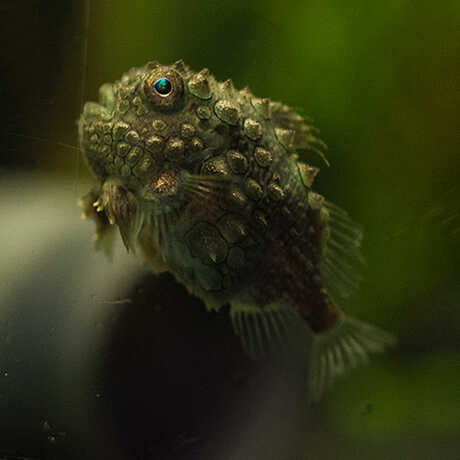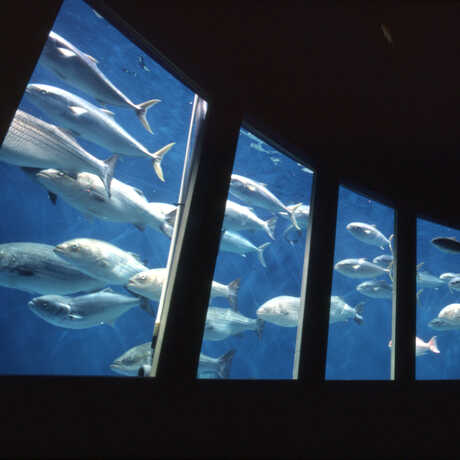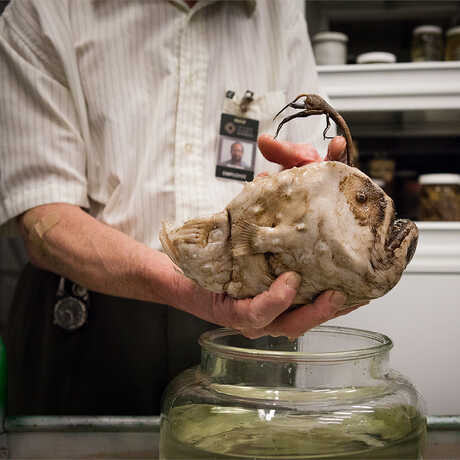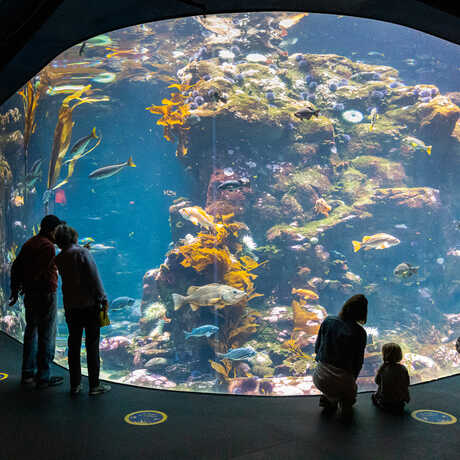Creature Closeups
Pacific Spiny Lumpsucker
With their befuddled-looking expressions, globiform bodies, and comically poor swimming skills, Pacific spiny lumpsuckers (Eumicrotremus orbis) are almost impossible to observe with a straight face. These entertaining, endearing little creatures, however, also possess some pretty striking adaptations. Their standout trait is a true evolutionary wonder: What was once a set of pelvic fins has fused to form a large, surprisingly strong sucker disk, giving the orb-shaped fish the ability to anchor itself to rocks, kelp, and eel grass.
Description

Averaging about an inch in length, Pacific spiny lumpsuckers have tiny fins and (unlike most fish) no swim bladder of any kind, yet the species' small size and inefficient swimming hasn’t kept some lumpsuckers from venturing to depths as great as 480 feet.
Part of the secret to lumpsucker success is their low body density, which results from a bony skeleton and deposits of buoyant, subcutaneous jelly. Both males and females have these deposits, but they’re significantly larger in females—a trait scientists think helps offset the 200 or more eggs they lug around during spawning season.
Range
The Pacific spiny lumpsucker can be found stuck to substrate in cold, coastal waters from Washington State to Alaska's Aleutian Islands, and westward to the Bering Sea, Chukchi Sea, and Japan.
Reproduction
Between July and October, females deposit their eggs into rock crevices guarded by males, which arrive in shallow waters ahead of time to stake out the nests they’ll fertilize. While females quickly resume the solitary, semi-pelagic life of a lumpsucker, males stick faithfully beside the clutch for three to eight weeks, protecting and aerating eggs that hatch into well-developed juveniles. Within just a few days, they’re ready to munch on tiny polychaete worms, crustaceans, and mollusks.
Camouflage
Lumpsuckers have many predators, but the plate-like structures they’re covered in (containing spiny outgrowths called tubercles) come in a wide range of reds, greens, and browns, providing excellent camouflage in a variety of habitats.
Phylogeny
Pacific spiny lumpsuckers are one of the smallest of 27 species of lumpsuckers in the Cyclopteridae family, closely related to sculpins and snailfish.
Common name: Pacific spiny lumpsucker
Scientific name: Eumicrotremus orbis
Size: 1-3 inches
Range: Washington State to Alaska; northern Japan to Bering Sea
Habitat: Cold coastal waters with abundant hiding spots
IUCN Red List status: Unknown
As you step down into the Water Planet exhibit in Steinhart Aquarium, the lumpsucker habitat is to the left of the cylindrical moon jelly exhibit.



